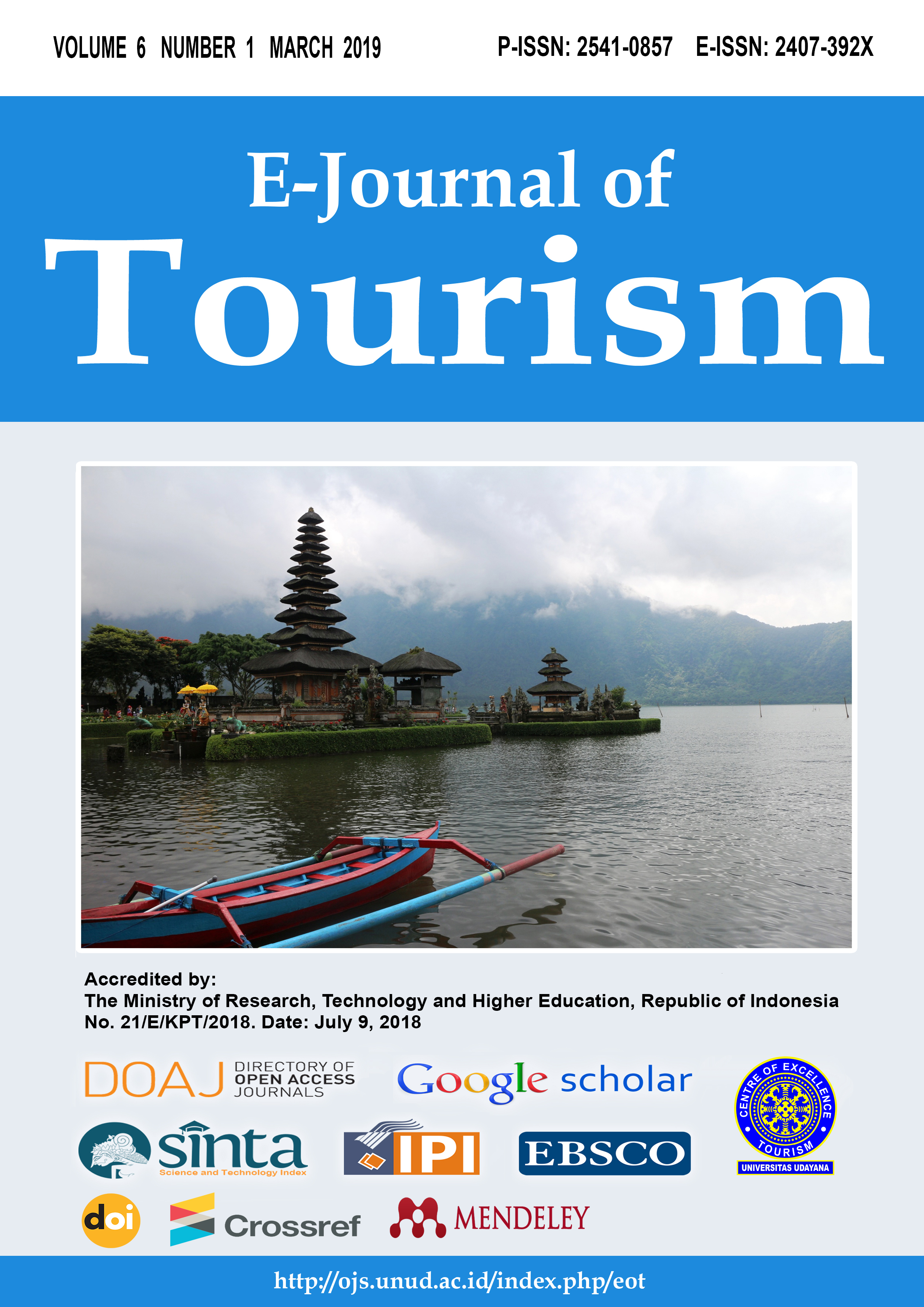Enhancing Cultural Heritage Tourism Experience with Augmented Reality Technology in Bali
Abstract
Cultural heritage tourism industry is generally required to continuously be creative in finding new strategies for attracting and engaging tourists actively in enjoying this type of tourism. However, cultural heritage managers generally face challenges in marketing and competitiveness. One of the ways to gain competitive advantage is the implementation of the Augmented Reality technology. This study was conducted in order to recreate an interpretation of tourist attractions with the use of Augmented Reality in Bali with the aim of enhancing cultural heritage tourists experience. The methodology used are documentation, interview, usability study and observation. Researches on usability involves users in testing a prototype. The prototype here is an augmented reality app that present the condition of three tourist attractions in Bali (Kuta, Sanur and Uluwatu), back then to 1970-1980s, to the times before Mass Tourism became a threat like nowadays. The usability study and observation method are widely used to understand how people work with electronic devices such as mobile phones and tablets in recent days. The expected results in this study are to produce an app that is useful to enhance the experience of tourists in Bali and at the end it is expected to create a better appreciation to the culture, history of Bali and its tourism.
Keywords: Augmented Reality, Cultural, Heritage, Tourism, Tourist, Experience, Bali
Downloads

This work is licensed under a Creative Commons Attribution 4.0 International License.
The copyright of the received article shall be assigned to the journal as the publisher of the journal. The intended copyright includes the right to publish the article in various forms (including reprints). The journal maintains the publishing rights to the published articles.




















